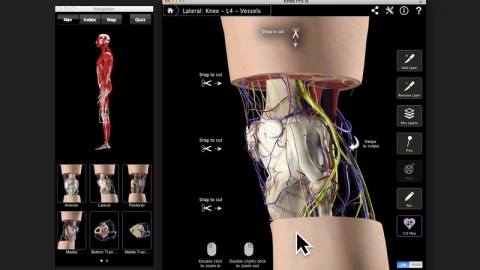Your Doctor Is an App When Technology Is the Cure

It used to be that the word “doctor” brought to mind an image of a kindly old man in a small office with a stethoscope, but now it conjures up an image of an app on a smartphone or a high-end digital device transmitting medical information over the Internet. As digital innovations continue to cross over into the healthcare space, they are forever changing the way that we think about medicine, healthcare, and even the role that doctors have in curing us. “Digital health” has the ability to influence not only how we think about healthcare, but also to bring the exponential computing gains possible within the digital world into the world of slower-moving medicine.
Take, for example, this week’s WWDC 2012 conference, where Apple not only highlighted changes to its mobile operating system iOS6, but also highlighted how mobile apps are changing the world of medicine. Apple in particular singled out 3D4Medical, which specializes in the development of medical apps that contain real-world renderings of human anatomy for mobile devices such as the iPad and iPhone. In some cases, these relatively low-cost apps are now being used to teach anatomy in the developing world. With the new AirPlay Mirroring technology from Apple, educators can now project realistic anatomical models from apps onto a big screen, making apps from 3D4Medical an integral part of the medical educational experience for a large audience.
And that’s not all – the latest crop of startups being funded by venture capitalists are figuring out ways to turn your smart phone and tablet into world-class medical instruments. Consider the example of AliveCor, which just picked up $10.5 million in Series B funding from elite VC investors Khosla Ventures. What AliveCor does is truly extraordinary – by adding a lightweight plastic case to your iPhone, AliveCor is able to transform your iPhone into a clinical-quality ECG that you can hold up to your chest for accurate readings. (You have to watch the AliveCor YouTube video to believe it) Your “smart phone” today is truly “smart” – and with all of its built-in sensors, it has the ability to become much more than just a phone that you use to make calls.
Clearly, there’s something very special going on in the digital health space. David Shaywitz of Forbes has hinted that digital health might be the next logical wave of the Silicon Valley boom. Not surprisingly, brands are taking notice. Nike is taking strides to embrace digital health through its FuelBand device for fitness (including a new Nike+ Kinect Training exercise game for the Xbox 360). Meanwhile, the top free medical app in the App Store – Medscape – has now been downloaded over 500,000 times. Think about that — there are half a million people out there who now think of their doctor as an app. (Or, perhaps more accurately, there are half a million people who can afford an app when compared to the skyrocketing price of healthcare.)
Going forward, look for the pace of digital health innovation to accelerate, driven forward by the growing ubiquity of mobile devices in everyday life and continued improvements to mobile operating systems like iOS6 and Android. And don’t forget about the medical prize competitions, which are making possible bold new breakthroughs in digital devices by imagining how to make the future a better place and putting money against that vision. There’s perhaps no better example than the $10 million Qualcomm Tricorder X Prize, which has its goal the creation of a real-world tricorder like the one they used in Star Trek. When – not if – digital innovators are able to develop a portable, wireless device that fits in the palm of your hand that monitors and diagnoses your health conditions, it will be the final proof that your doctor is an app when technology is the cure.
image: Knee Pro III by 3D4Medical





